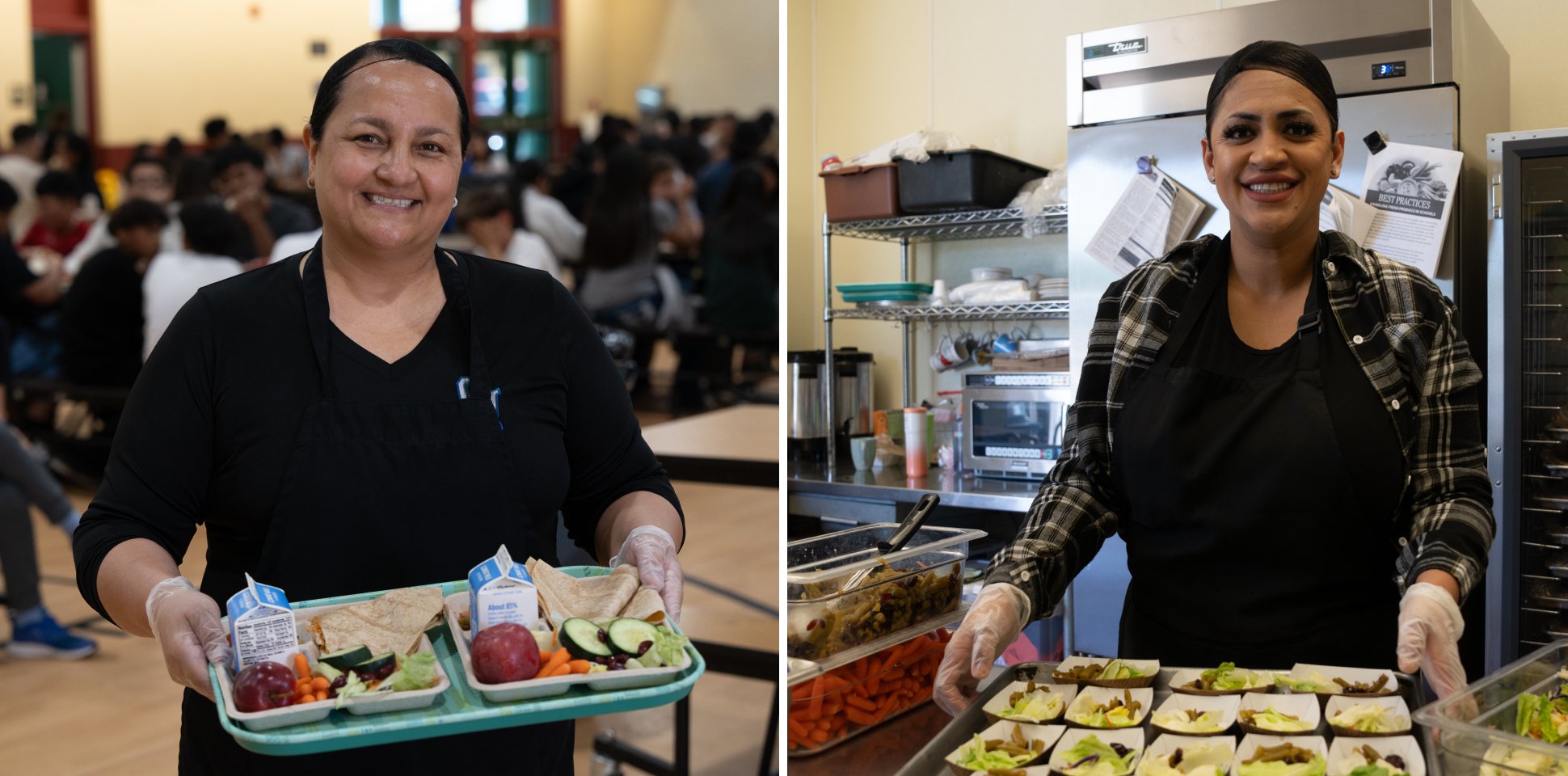Seconds, Please: Planning School Menus that Keep Kids Coming Back for More
June 25, 2024
Planning healthy and enticing meals for one child can be a challenge. So how do School Food Professionals plan good and good-for-you menus for hundreds of hungry students every school day? To Esther Huizar, cafeteria manager for Oak Valley Union Elementary School District in Tulare (Central California), it requires creativity, with a big helping of preparation and coordination.
“I try to plan everything out ahead of time,” Esther said. “That way we have what we need to make home-style meals students can enjoy.”
Whether in large or small school districts, these tricks are used by School Food Professionals to plan mouthwatering menus that keep kids coming back for more.
- Start From Scratch
The best way to plan a healthy menu for your students is to start from scratch. Making meals from scratch using simple, healthy ingredients provides better nutrition, leading to healthier exercise and eating habits and stronger cognitive functioning. “That’s my biggest goal here at Oak Valley,” Esther said. “To cook more from scratch. More fresh fruits, more fresh vegetables. We’ve improved a lot.”
- Choose the Foods Kids Love
If you want kids to eat healthy foods, you need to make healthy foods kids want to eat. That means adapting the foods kids love with fresh and healthy ingredients. Making pizza? Top it with healthy veggies, or even create your own farm-fresh kale pesto sauce. Making quesadillas? At Oak Valley, Esther and her team give this favorite a healthier spin by cooking with whole wheat tortillas, low-fat cheese and low-fat chicken. They even make their pico de gallo from scratch.
- Fresh Marks the Spot
To give your students the most flavorful possible meals, go with what’s in season! Many schools use a Harvest of the Month program to highlight a particular ingredient in their menus. Not only does it keep ingredients at their freshest, but it provides a great opportunity to educate students about agriculture. “We have a little farm, and last week, we used fresh lettuce that our kindergarteners helped to grow,” Huizar said. “They brought it to the kitchen, and we made a salad with it. The kids were so excited.”
- Have a Plan. And a Plan B
Planning menus for entire school sites is a big job. So it’s important to look ahead and map out what you plan to cook over time. Many schools and districts use a six-week cycle for lunches, which allows for variety without having so many recipes that it’s difficult to keep staff trained on how to make them all. Getting all those ingredients sourced and in the right place on time is a delicate balance, even when everything goes right. And that’s not always the case.
“Sometimes a delivery doesn’t get here on time, so I have to have a plan A, B, and C.” Esther said. “You look around at what you have and start from there. Maybe we were going to have chicken tacos, but there’s no tortilla. So we put the chicken on some chips with cheese, and the kids love it.”
Fresh, healthy meals make a huge difference in any child’s life. Creating menus that get them not just in the door but excited to dine is critical to making sure kids get what they need to succeed in the classroom and beyond. Pulling that off means working right at the intersection of planning, playfulness and passion.
“That’s what’s so great about this job,” said Esther. “It’s all about food, about celebrating, and that’s what I do.”
